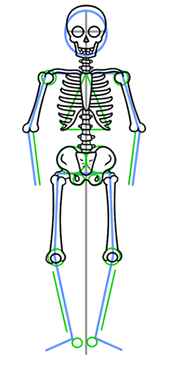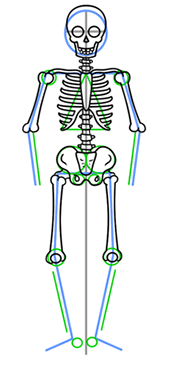Will Your Content Have the Bones to Stand Up to Prospective Customers?
While the content on a website page fuels lead generation and conversion, its level of success is heavily influenced by the strength of its headings, subheadings and call outs.
Website page headings and call outs share the same purpose as headlines in print articles and ads. They attract attention, generate interest, and persuasively communicate a message. The quality of your headlines and subheadings also determine if and how closely the content that follows will be read. Clear, concise, and compelling headings pull readers into the body of your content; engaging subheadings keep them there; and bullet points provide any additional details needed to elicit some behavior. When these elements are combined, they form the bare minimums of a page structure and represent its core meaning. In this sense, it’s like the skeletal foundation your content is built on, and the attention grabbers that guide visitors through the page.
The Lovely Bones of your Content
The primary parts of a skeletal structure align with elements on a website page.
- Head (heading)
- Body (subheadings filtered around the body of the page content)
- Legs (calls to action, what gets your visitors DOING something, moving towards that next step you want them to take.)
Your webpage’s skeletal structure communicates its core message. It also may be the only content visitors actually read, so it’s worth analyzing.
How to Analyze Your Webpage’s Content Structure
To gauge the impact of any website page, start by removing all content except for its headings, subheadings and call outs. Then, read through the skeletal structure to test how well it conveys its intended message and guides prospective customers to next steps.
If you are asking yourself why you should bother with this exercise, consider this. Prospective customers that scan, skim, or soar through your website pages see little else beyond your page’s skeletal structure. If they can’t find what they are looking for or are not intrigued enough to stay based on what they pick up in their brief review, they’ll leave. Even when they don’t read enough to make an informed judgment about your company, they form some impression on the fly – which usually isn’t positive if they leave your website unfulfilled.
If after your test you find that the skeletal structures on your website pages are a little shaky, strengthen their presence and increase their impact to readers by taking an inside out approach. This method focuses on identifying and developing the core essence of a page, then radiating outward from that core message with layers of supportive content. Each step builds on the next, so start at the beginning and don’t skip any along the way.
- Start by determining the key point of the page. Distill it down to a key concept that you need the content to convey to drive your readers to your designated “next step”. Make a list of alternative points the page should make, and then pick the best one to use as the central theme or core concept.
- Add terms to this core concept until you’ve told your story in a short headline. Make a list of alternative headlines to once again select the best of the lot based on the next step you want your prospective customers to take.
- Take the winning headline as the starting point of your message, and then build on it with a list of subheadings that add impact to your message.
- For each subheading that requires further details to be complete, add a list of bulleted phrases or statements.
- String them all together to form your skeletal structure, and then read it as one message. If it flows relatively smoothly and provides the most critical aspects of the page you wanted to point out, then you are ready to advance to the last stage of development.
- Populate the page with the appropriate layers of supportive material to strengthen the structure.
- Before finalizing, re-evaluate each element on the page and determine if anything could be pulled from the page without adversely impacting your message. Interestingly enough, it is often more difficult shaving content that does not contribute to the page’s BIG IDEA than it is creating it. After fully trimmed, you will often find that your leaner edition carries more punch than its stockier version.
Strengthening a weak content structure will elevate your website page’s performance. If your pages are created on a weak foundation, it will fall apart, leaving it ineffective. Develop your web content to stand up to the job of converting your site’s visitors.
Investing time and energy into a sound content structure will pay huge dividends and lead to sizeable results. Companies that pay close attention to what their prospective customers need and what their competitors overlook or diminish in value will create a sustainable competitive online advantage.

